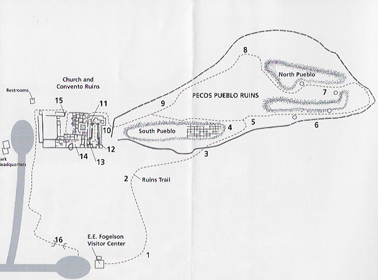
Location
On church wall (N35D32'59.501 X W105D41.22.062)
Flowers first observed: 7/7/17
The Plant

The Flowers

Distribution
"(It) is a species of mint native to much of Europe and Asia (Middle East, Himalayas, China etc.), and naturalized in parts of northern and western Africa, North America, and South America, as well as various oceanic islands" (Wikipedia)
Description
"It is a herbaceous, rhizomatous, perennial plant growing 30–100 cm tall, with variably hairless to hairy stems and foliage, and a wide-spreading fleshy underground rhizome. The leaves are 5–9 cm long and 1.5–3 cm broad, with a serrated margin. The stem is square-shaped, a trademark of the mint family of herbs. Spearmint produces flowers in slender spikes, each flower pink or white, 2.5–3 mm long, and broad." (Wikipedia)
Ethnobotanical Uses
Medicine:
"Menthol, the most active of the mint-derived substances, is found in only small quantities in Spearmint, the primary active ingredient being cavone, a substance also found in dill and caraway seeds. The main value of Spearmint is its almost complete lack of toxicity and the ability f even the sickest person to tolerate the tea. It is its very feebleness that makes it so useful. Soothing to the stomach and a mild diuretic and diaphoretic, it has mild vasodilating characteristics, imparting a pleasant warm glow to the drinker. Along with vanilla, Spearmint is a universally enjoyed scent. In traditional New Mexican and Hispanic usage, Yerba Buena (Spearmint) is the only liquid given to a birthing mother, considered helpful as a mild uterine astringent and aiding in postpartum contractions. ---" (Moore 148)
Internet Links